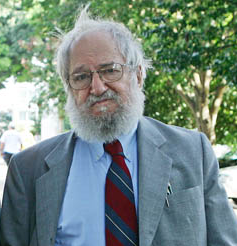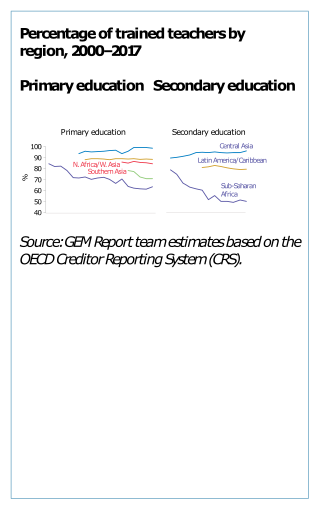In bilingual education, students are taught in two languages. It is distinct from learning a second language as a subject because both languages are used for instruction in different content areas like math, science, and history. The time spent in each language depends on the model. For example, some models focus on providing education in both languages throughout a student's entire education while others gradually transition to education in only one language. The ultimate goal of bilingual education is fluency and literacy in both languages through a variety of strategies such as translanguaging and recasting.
Language education – the process and practice of teaching a second or foreign language – is primarily a branch of applied linguistics, but can be an interdisciplinary field. There are four main learning categories for language education: communicative competencies, proficiencies, cross-cultural experiences, and multiple literacies.

Mentorship is the patronage, influence, guidance, or direction given by a mentor. A mentor is someone who teaches or gives help and advice to a less experienced and often younger person. In an organizational setting, a mentor influences the personal and professional growth of a mentee. Most traditional mentorships involve having senior employees mentor more junior employees, but mentors do not necessarily have to be more senior than the people they mentor. What matters is that mentors have experience that others can learn from.
Instructional scaffolding is the support given to a student by an instructor throughout the learning process. This support is specifically tailored to each student; this instructional approach allows students to experience student-centered learning, which tends to facilitate more efficient learning than teacher-centered learning. This learning process promotes a deeper level of learning than many other common teaching strategies.
In psychology, cognitivism is a theoretical framework for understanding the mind that gained credence in the 1950s. The movement was a response to behaviorism, which cognitivists said neglected to explain cognition. Cognitive psychology derived its name from the Latin cognoscere, referring to knowing and information, thus cognitive psychology is an information-processing psychology derived in part from earlier traditions of the investigation of thought and problem solving.

English as a second or foreign language is the use of English by speakers with different native languages. Language education for people learning English may be known as English as a foreign language (EFL), English as a second language (ESL), English for speakers of other languages (ESOL), English as an additional language (EAL), or English as a New Language (ENL).
Second-language acquisition (SLA), sometimes called second-language learning — otherwise referred to as L2acquisition, is the process by which people learn a second language. Second-language acquisition is also the scientific discipline devoted to studying that process. The field of second-language acquisition is regarded by some but not everybody as a sub-discipline of applied linguistics but also receives research attention from a variety of other disciplines, such as psychology and education.

Constructionist learning is the creation by learners of mental models to understand the world around them. Constructionism advocates student-centered, discovery learning where students use what they already know, to acquire more knowledge. Students learn through participation in project-based learning where they make connections between different ideas and areas of knowledge facilitated by the teacher through coaching rather than using lectures or step-by-step guidance. Further, constructionism holds that learning can happen most effectively when people are active in making tangible objects in the real world. In this sense, constructionism is connected with experiential learning and builds on Jean Piaget's epistemological theory of constructivism.
Sheltered instruction is an approach to teaching English-language learners that integrates language and content instruction. The phrase "sheltered instruction", the original concept, and the underlying theory of comprehensible input are all credited to Stephen Krashen.

Teacher education or teacher training refers to programs, policies, procedures, and provision designed to equip (prospective) teachers with the knowledge, attitudes, behaviors, approaches, methodologies and skills they require to perform their tasks effectively in the classroom, school, and wider community. The professionals who engage in training the prospective teachers are called teacher educators.
The desire to learn is often related to the concept of ‘motivation’. Motivation is the most used concept for explaining the failure or success of a language learner. Second language (L2) refers to a language an individual learns that is not his/her mother tongue, but is of use in the area of the individual. It is not the same as a foreign language, which is a language learned that is not generally spoken in the individual's area. In research on motivation, it is considered to be an internal process that gives behavior energy, direction and persistence in research . Learning a new language takes time and dedication. Once you do, being fluent in a second language offers numerous benefits and opportunities. Learning a second language is exciting and beneficial at all ages. It offers practical, intellectual and many aspirational benefits. In learning a language, there can be one or more goals – such as mastery of the language or communicative competence – that vary from person to person. There are a number of language learner motivation models that were developed and postulated in fields such as linguistics and sociolinguistics, with relations to second-language acquisition in a classroom setting. The different perspectives on L2 motivation can be divided into three distinct phases: the social psychological period, the cognitive-situated period and the process-oriented period.
English-Language Learner is a term used in some English-speaking countries such as the United States and Canada to describe a person who is learning the English language and has a native language that is not English. Some educational advocates, especially in the United States, classify these students as non-native English speakers or emergent bilinguals. Various other terms are also used to refer to students who are not proficient in English, such as English as a Second Language (ESL), English as an Additional Language (EAL), limited English proficient (LEP), Culturally and Linguistically Diverse (CLD), non-native English speaker, bilingual students, heritage language, emergent bilingual, and language-minority students. The legal term that is used in federal legislation is 'limited English proficient'. The instruction and assessment of students, their cultural background, and the attitudes of classroom teachers towards ELLs have all been found to be factors in the achievement of these students. Several methods have been suggested to effectively teach ELLs, including integrating their home cultures into the classroom, involving them in language-appropriate content-area instruction early on, and integrating literature into their learning programs.
The direct method of teaching, which is sometimes called the natural method, and is often used in teaching foreign languages, refrains from using the learners' native language and uses only the target language. It was established in England around 1900 and contrasts with the grammar–translation method and other traditional approaches, as well as with C.J. Dodson's bilingual method. It was adopted by key international language schools such as Berlitz, Alliance Française and Inlingua in the 1970s and many of the language departments of the Foreign Service Institute of the U.S. State Department in 2012.
Self access language learning centers are educational facilities designed for student learning that is at least partially, if not fully self-directed. Students have access to resources ranging from photocopied exercises with answer keys to computer software for language learning. These centers are an outgrowth of a style of learning that can go by several names: learner-centered approach, learner autonomy or self-directed learning. These centers exist primarily in Asia, Europe and North America. Use of such facilities and the pedagogical theory they are based upon has its advantages and disadvantages. Proper use can result in a feeling of empowerment and better learning outcomes, but getting to the point where students and teachers can exploit them effectively can be problematic. For this reason, the structure of established self access centers varies from completely student-directed work with classroom immersion to programs that provide primarily tutor or instructor guidance for student work•
The input hypothesis, also known as the monitor model, is a group of five hypotheses of second-language acquisition developed by the linguist Stephen Krashen in the 1970s and 1980s. Krashen originally formulated the input hypothesis as just one of the five hypotheses, but over time the term has come to refer to the five hypotheses as a group. The hypotheses are the input hypothesis, the acquisition–learning hypothesis, the monitor hypothesis, the natural order hypothesis and the affective filter hypothesis. The input hypothesis was first published in 1977.
Language pedagogy is the discipline concerned with the theories and techniques of teaching language. It has been described as a type of teaching wherein the teacher draws from their own prior knowledge and actual experience in teaching language. The approach is distinguished from research-based methodologies.
The main purpose of theories of second-language acquisition (SLA) is to shed light on how people who already know one language learn a second language. The field of second-language acquisition involves various contributions, such as linguistics, sociolinguistics, psychology, cognitive science, neuroscience, and education. These multiple fields in second-language acquisition can be grouped as four major research strands: (a) linguistic dimensions of SLA, (b) cognitive dimensions of SLA, (c) socio-cultural dimensions of SLA, and (d) instructional dimensions of SLA. While the orientation of each research strand is distinct, they are in common in that they can guide us to find helpful condition to facilitate successful language learning. Acknowledging the contributions of each perspective and the interdisciplinarity between each field, more and more second language researchers are now trying to have a bigger lens on examining the complexities of second language acquisition.
Second-language acquisition classroom research is an area of research in second-language acquisition concerned with how people learn languages in educational settings. There is a significant overlap between classroom research and language education. Classroom research is empirical, basing its findings on data and statistics wherever possible. It is also more concerned with what the learners do in the classroom than with what the teacher does. Where language teaching methods may only concentrate on the activities the teacher plans for the class, classroom research concentrates on the effect the things the teacher does has on the students.

Zoltán Dörnyei was a Hungarian-born British linguist. He was a professor of psycholinguistics at the University of Nottingham in the United Kingdom. He was known for his work on second language acquisition and the psychology of the language learner, in particular on motivation in second language learning, having published numerous books and papers on these topics.

Judit Kormos is a Hungarian-born British linguist. She is a professor and the Director of Studies for the MA TESOL Distance programme at the Department of Linguistics and English Language at Lancaster University, United Kingdom. She is renowned for her work on motivation in second language learning, and self-regulation in second language writing. Her current interest is in dyslexia in second language learning.





